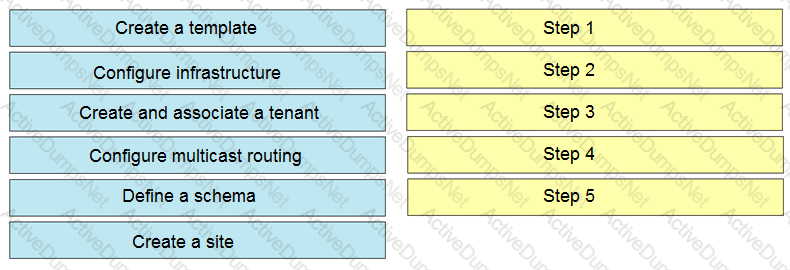Refer to the exhibit.
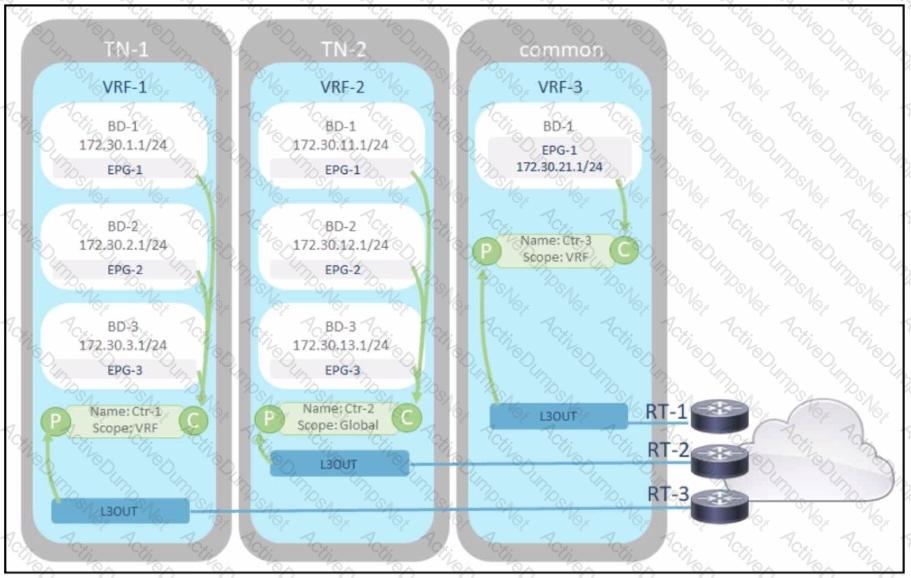
A company decided to decrease its routing footprint and remove RT-2 and RT-3 devices from its data center. Because of that, the exit point must be created from all the tenants by using the common tenant. Which two configuration tasks must be completed to meet these requirements? {Choose two.)
Refer to the exhibit.
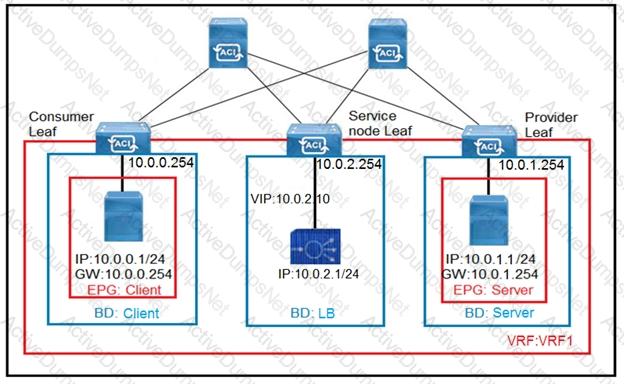
The client endpoint uses the load-balancer VIP as the destination address to send traffic to the server endpoint. If the load balancer does not do source NAT, which set of configurations must be applied on Cisco ACI to allow only the return traffic to be redirected to the service node?
How does Cisco ACI manage the STP BPDUs between two pods?
Which two actions should be taken to ensure a scalable solution when multiple EPGs in a VRF require unrestricted communication? (Choose two.)
What is a design implication for Cisco ACI using an application-centric approach?
A leaf receives unicast traffic that is destined to an unknown source, and spine proxy is enabled in the corresponding bridge domain. Drag and drop the Cisco ACI forwarding operations from the left into the order the operation occurs on the right.
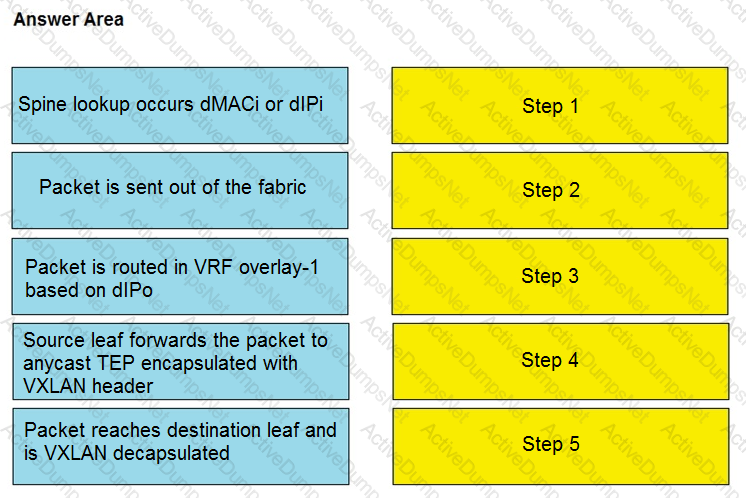
An engineer troubleshoots a Cisco ACI fabric and receives this output.
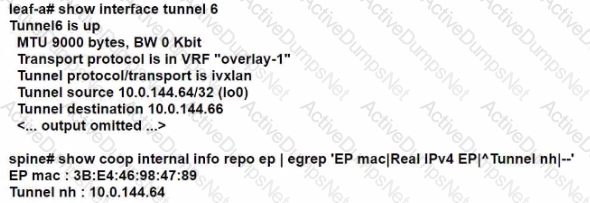
What does tunnel 6 use?
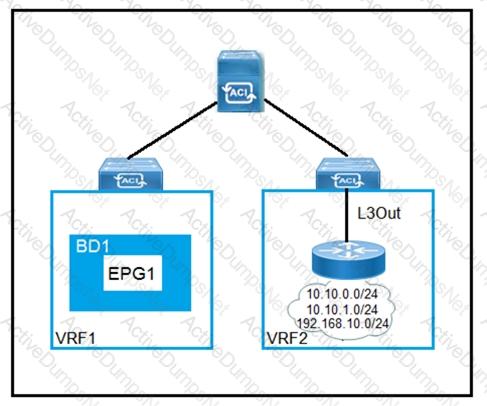
Refer to the exhibit. Drag and drop the subnets and flags from the left into the External Network Instance Profile policies on the right to create a setup that advertises only 10.10.0.0/24 and 10.10.1.0/24 prefixes in VRF1 and establishes connectivity between VRFs. Not all options are used.
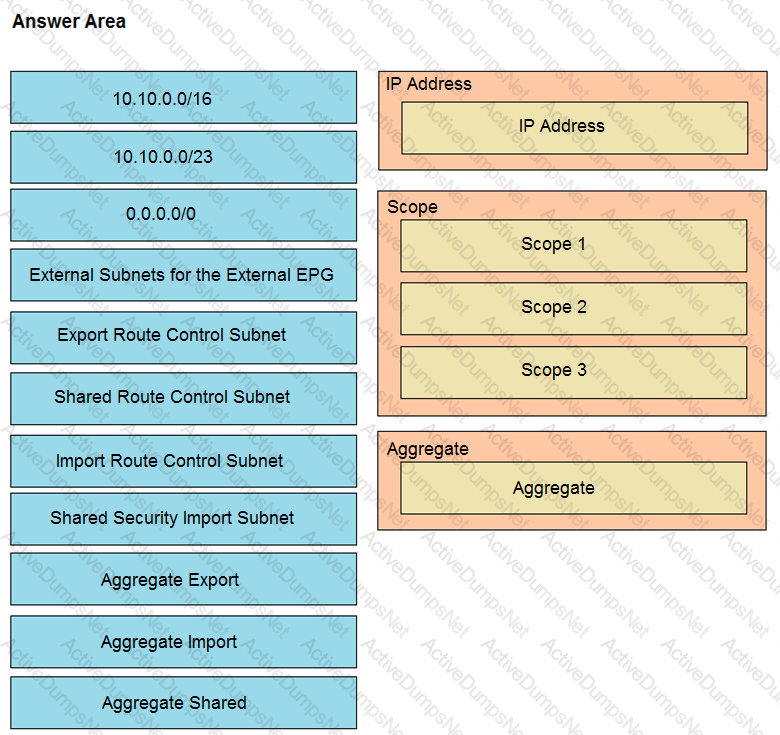
Refer to the exhibit.
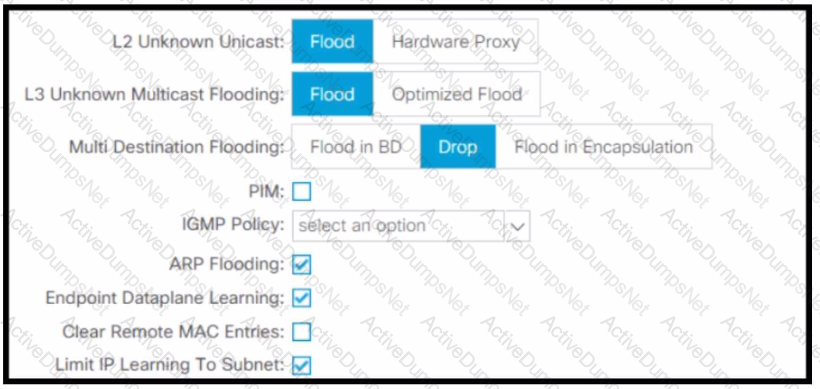
Which method does Cisco ACI fabric use to forward L2 Unknown Unicast packets?
Which PIM version must be configured in the Inter-Pod Network to allow broadcast, unknown unicast. and multicast flooding between Cisco ACI pods?
An engineer configures a new Cisco ACI Multi-Pod setup. Which action should be taken for fabric discovery to be successful for the nodes in Pod 2?
Refer to the exhibit.
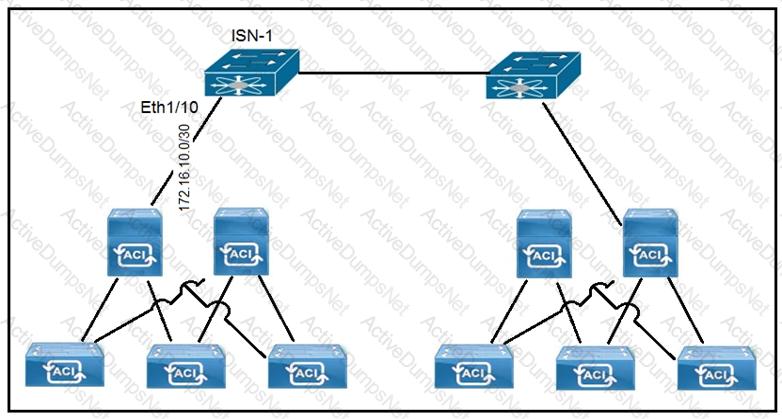
A customer implements Cisco ACI Multi-Site with default MTU settings between two sites. Which configuration should be applied on the interface Eth1/10 on the ISN-1 device?
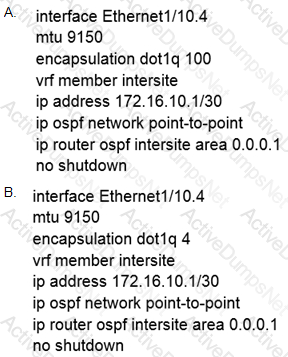
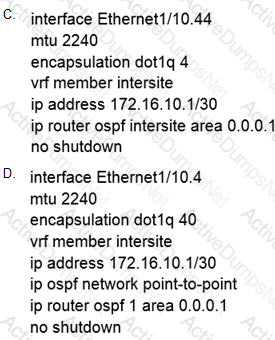
A customer is deploying a new application across two ACI pods that is sensitive to latency and jitter. The application sets the DSCP values of packets to AF31 and CS6, respectively. Which configuration changes must be made on the APIC to support the new application and prevent packets from being delayed or dropped between pods?
Refer to the exhibit.
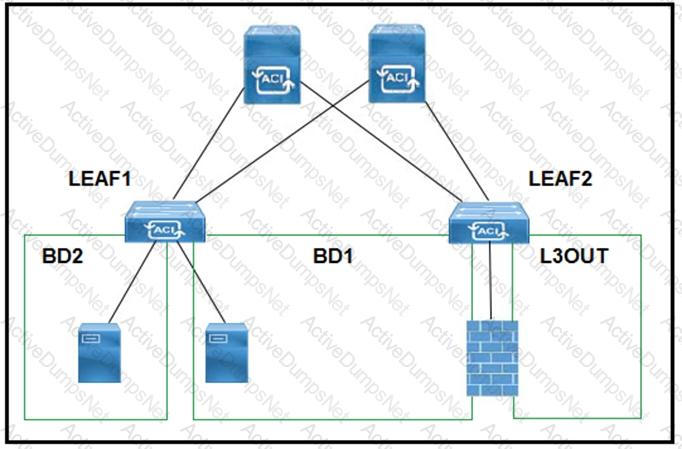
A customer experiences resource overconsumption on one of its border leaf switches. Which action should be taken to reduce the consumption on this switch?
What two actions should be taken to deploy a new Cisco ACI Multi-Pod setup? (Choose two.)
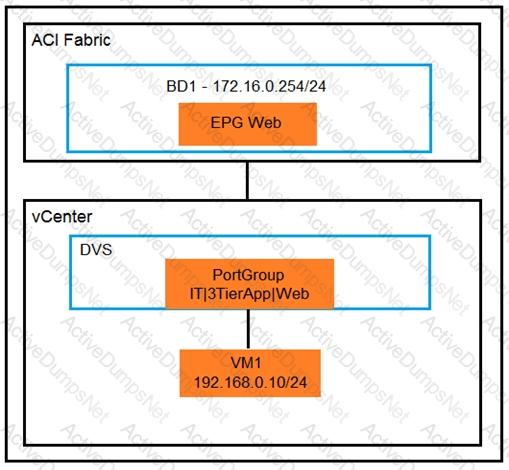
An organization migrates its virtualized servers from a legacy environment to Cisco ACI. VM1 is incorrectly attached to PortGroup IT|3TierApp|Web. Which action limits IP address learning in BD1?
Where are STP BPDUs flooded in Cisco ACI fabric?
Refer to the exhibit.
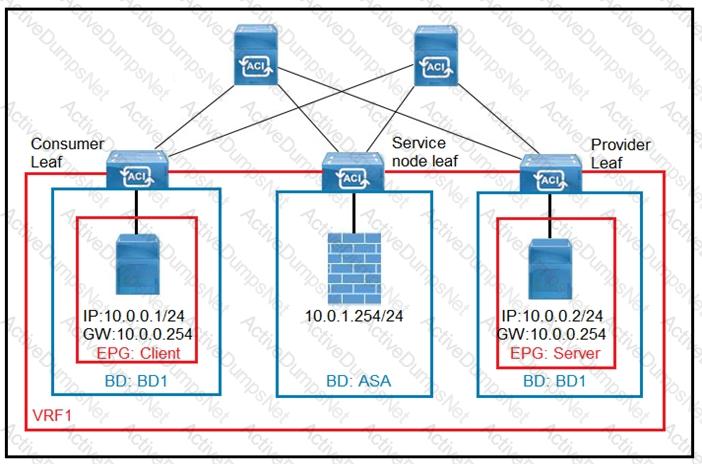
What must be configured in the service graph to redirect HTTP traffic between the EPG client and EPG server to go through the Cisco ASA firewall?
How is broadcast forwarded in Cisco ACI Multi-Pod after ARP flooding is enabled?
Refer to the exhibit.
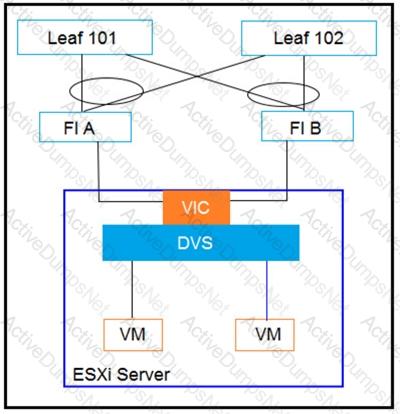
Between Cisco UCS Fls and Cisco ACI leaf switches, CDP is disabled, the LLDP is enabled, and LACP is in Active mode. Which two discovery protocols and load-balancing mechanism combinations can be implemented for the DVS? (Choose two.)
Refer to the exhibit.
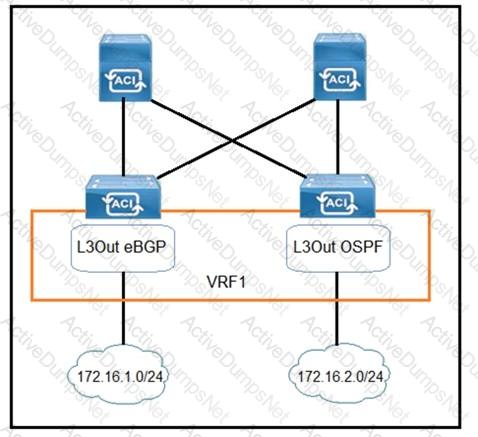
Which configuration must be implemented on L3Out EBGP to advertise out of the fabric 172.16.2.0/24 network that is learned from L3Out OSPF?
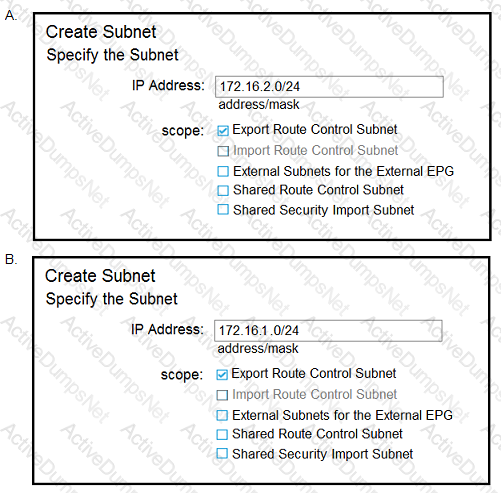
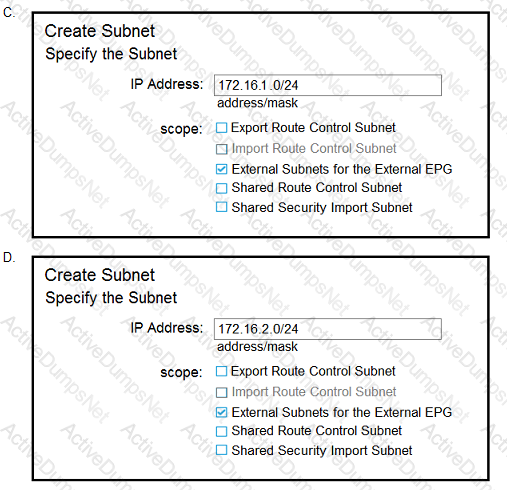
Leaf 1002 receives a packet from a host attached to Leaf1001. The packet contains the MAC address. IP address, and VRF of the source. Which information does each node learn?
A Cisco ACI fabric is connected to a switched network that runs Spanning Tree Protocol on VLAN 101. VLANs 101. 102. and 103 are mapped to bridge domain BD10123. The leaf node that is attached to this switched network receives a spanning-tree topology change notification. Which endpoints does AC I flush?
Refer to the exhibit.
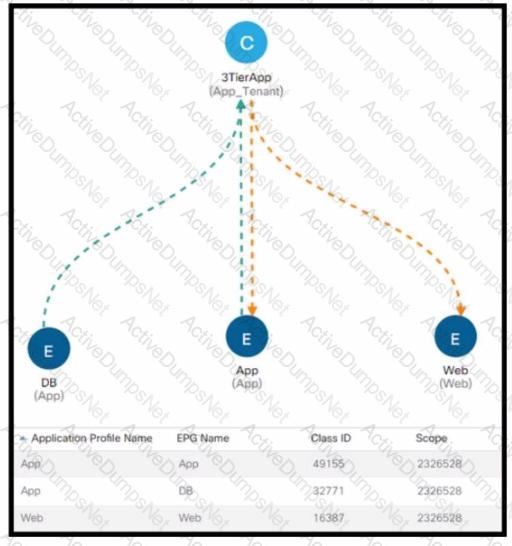
New e-commerce software is deployed on Cisco ACI fabric. The environment must meet these requirements;
• The overall number of contracts must be reduced by reusing the existing contracts within a VRF when possible
• The e-commerce software must communicate only with software EPGs that are part of the same ANP.
• The e-commerce software must be prevented from communicating with applications in different AN Ps.
Which scope must be selected to meet these requirements?
Refer to the exhibit.
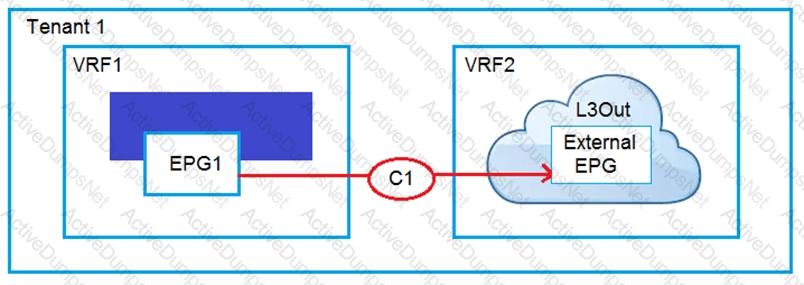
An engineer must have communication between EPG1 in VRF1 and External EPG in VRF2. Which three actions should be taken for the defined subnets in the L3Out External EPG to accomplish this goal? (Choose three.)
Which feature should be disabled on a bridge domain when a default gateway for endpoints is on an external device instead of a Cisco ACI bridge domain SVI?
An engineer is deploying a Cisco ACI fabric and discovers that the traffic to certain endpoints is dropped. The originating bridge domain is configured with hardware proxy. Which action prevents this problem?
Which two actions are the Cisco best practices to configure NIC teaming load balancing for Cisco UCS B- Series blades that are connected to the Cisco ACI leaf switches? (Choose two.)
What is the purpose of enabling ARP flooding when VMs are migrated from a pre-existing network to Cisco ACI and their gateways remain configured in the legacy setup?
What are two characteristics of Cisco ACI interaction with MSTP? (Choose two.)
Which requirement applies to migration from Cisco NX-OS mode to Cisco ACI mode with Cisco Nexus 9000 Series Switches?
A host that is connected to a Cisco ACI fabric leaf switch sends an ARP request. Which transmission method does the ingress switch use to send the ARP requests?
Refer to the exhibit.
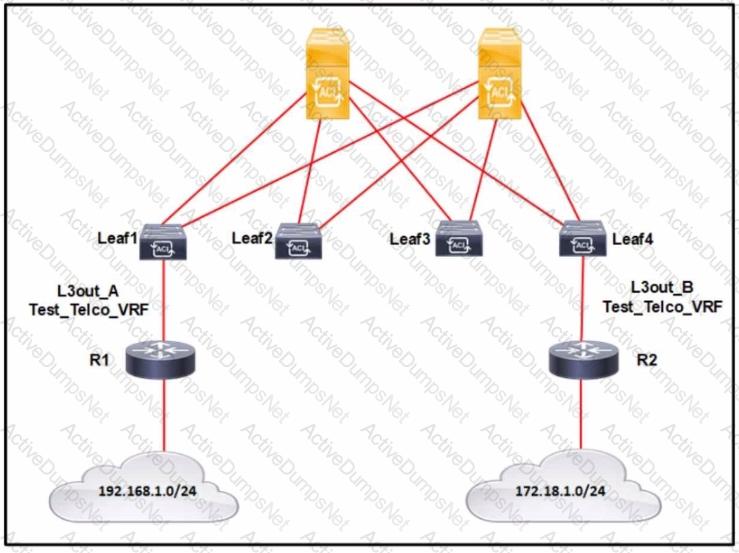
Which two sets of actions must be taken to permit subnet 192.168.1.0/24 to communicate with subnet 172.18.1.0/24 using Cisco ACI fabric? (Choose two.)
An engineer is configuring ACI Multi-Pod between two data centers and must plan the physical cabling in the primary data center. How must the Cisco ACI Multi-Pod topology be connected?
An engineer deploys a Cisco ACI Multi-Site Orchestrator for the first time. Drag and drop the actions from the left into the steps on the right to add a site and deploy new Cisco ACI objects to the fabric. Not all actions are used.
